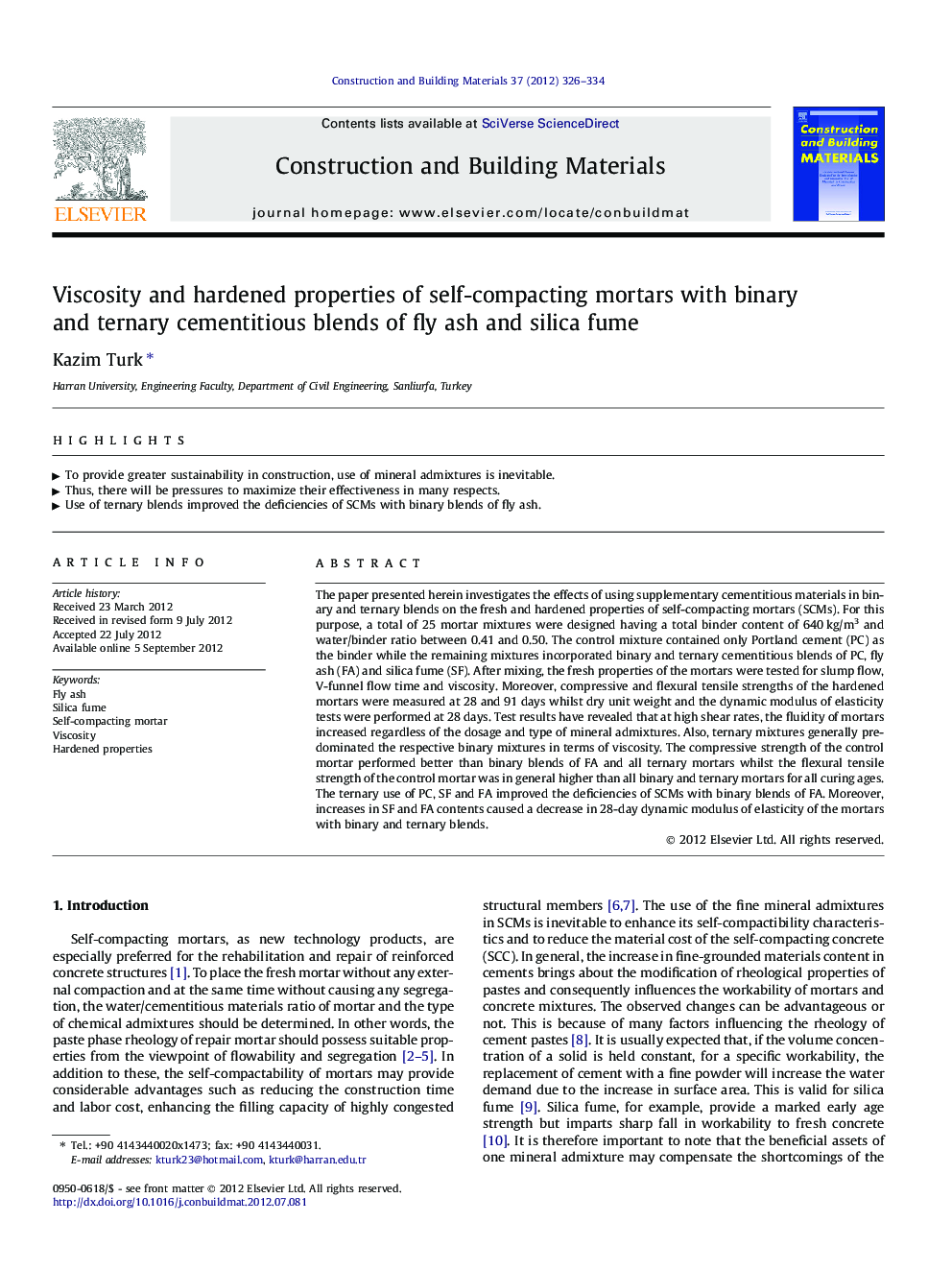| Article ID | Journal | Published Year | Pages | File Type |
|---|---|---|---|---|
| 258728 | Construction and Building Materials | 2012 | 9 Pages |
The paper presented herein investigates the effects of using supplementary cementitious materials in binary and ternary blends on the fresh and hardened properties of self-compacting mortars (SCMs). For this purpose, a total of 25 mortar mixtures were designed having a total binder content of 640 kg/m3 and water/binder ratio between 0.41 and 0.50. The control mixture contained only Portland cement (PC) as the binder while the remaining mixtures incorporated binary and ternary cementitious blends of PC, fly ash (FA) and silica fume (SF). After mixing, the fresh properties of the mortars were tested for slump flow, V-funnel flow time and viscosity. Moreover, compressive and flexural tensile strengths of the hardened mortars were measured at 28 and 91 days whilst dry unit weight and the dynamic modulus of elasticity tests were performed at 28 days. Test results have revealed that at high shear rates, the fluidity of mortars increased regardless of the dosage and type of mineral admixtures. Also, ternary mixtures generally predominated the respective binary mixtures in terms of viscosity. The compressive strength of the control mortar performed better than binary blends of FA and all ternary mortars whilst the flexural tensile strength of the control mortar was in general higher than all binary and ternary mortars for all curing ages. The ternary use of PC, SF and FA improved the deficiencies of SCMs with binary blends of FA. Moreover, increases in SF and FA contents caused a decrease in 28-day dynamic modulus of elasticity of the mortars with binary and ternary blends.
► To provide greater sustainability in construction, use of mineral admixtures is inevitable. ► Thus, there will be pressures to maximize their effectiveness in many respects. ► Use of ternary blends improved the deficiencies of SCMs with binary blends of fly ash.
